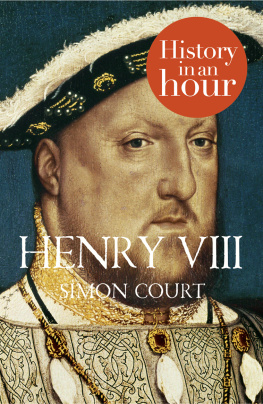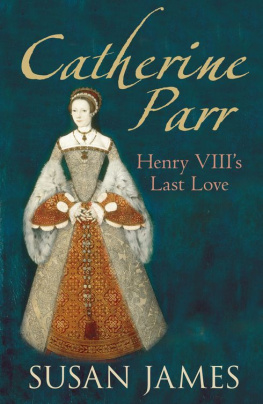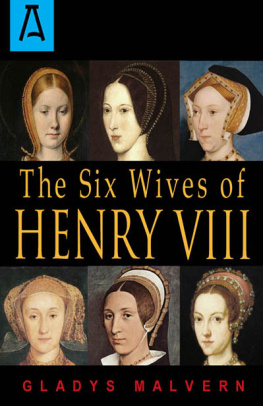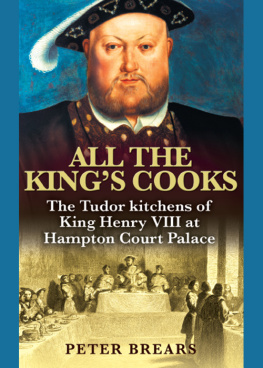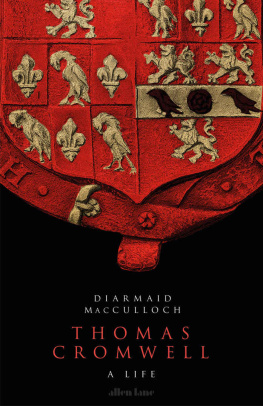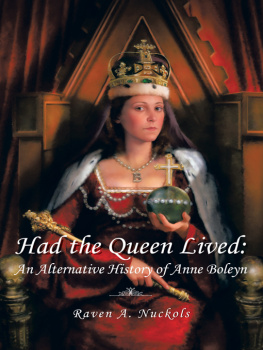
This work is based upon my doctoral thesis and I would like, firstly, to express my sincere gratitude to the National University of Ireland, Galway, and in particular the College of Arts, for endowing me with a fellowship. I would like to thank my supervisor, Professor Steven Ellis, for his encouragement, guidance and support and Dr Alison Forrestal for her constructive criticism and advice.
I would like to acknowledge the assistance given to me by the staff of the National Archives, Kew, the British Library, London, and the Borthwick Institute for Archives at the University of York, in particular, Victoria Hoyle. In addition, I am grateful for the help of the Special Collections staff in National University of Ireland, Galway.
I wish to convey my gratitude to Mark Beynon, commissioning editor at The History Press, for helping the work to see the light of day and for all his assistance, patience and understanding. I would also like to thank my editor, Naomi Reynolds, for her guidance, attention and support.
A number of people have sustained me throughout this project and special thanks go to Louise Rooney, Mairead Murphy and Katherine ODriscoll. I would also like to express my sincere appreciation to Carmel McGuinn and Rona McLaughlin who were steadfast in their support during difficult times.
I would like to express my love and thanks to Brendan, Mairead, Ciara, Patrick and Sean Loughlin. I also wish to acknowledge the friendship, loyalty and encouragement of Liza OMalley.
I wish to recognise the contribution of my grandparents in igniting my curiosity and fostering my love of learning Edward and Una Loughlin and Martin and Bridget Duffy. Finally, my enduring and heartfelt love and appreciation to my parents, John and Kathleen Loughlin, without whom none of this would have been possible.
In nomine Patris et Filii et Spiritus Sancti.
Contents
Of all the enigmas in the English Reformation, the motivations and intentions of King Henry VIII remain some of the most difficult to elucidate.
L ucy Woodings view echoed that of Felicity Heal, who stated that making sense of Henrician religious policy was a trying business. is an accurate appraisal.
It is, perhaps, for these reasons that the study of the English Reformation remains an appealing and fascinating task. As Susan Wabuda has stated, the challenges for understanding what the Reformation presents are among the most rewarding in all fields of scholarship.
The Reformation in England is indeed a fascinating subject to explore and this book focuses on one particular event, the Pilgrimage of Grace in 1536.
Although the Pilgrimage was confined to the North of England, its ramifications extended further and, whilst this is by no means an attempt at a national overview, the North cannot be viewed in total isolation, somehow divorced from the rest of England or, indeed, Christendom. In the same way as Dr Ryrie, I have had, once again, to traipse through a crowded field but would hope that the approach taken here will yield other topics for discussion. As Richard Hoyle has stated, the discovery of a new body of material on the Pilgrimage is a rare occurrence. Thus, this book explores different dimensions of the religious innovations in the North, using the Pilgrimage as its centrepiece, and concentrates on particular individuals and the parts they played in the movement.
It is necessary, at the outset, to provide a brief historiographical overview of the English Reformation, as well as a historiography specific to the Pilgrimage of Grace. The English Reformation has been the subject of much study and its common or dominant paradigm (until relatively recently) was dictated by the Whig interpretation of history the inevitable march of progress. The Reformation was regarded as necessary in the process of state-building, forging a national identity and freeing the people from the foreign tyranny and superstition of the papacy. Since the 1970s, scholars have used the term confessionalisation to describe how the Reformation became interlinked with the process of state-building. The contention is that monarchs (both Catholic and Protestant) rigorously promoted a single confession, or type of Christianity, within their territories in the sixteenth and seventeenth centuries. They repressed alternatives as a means of exercising and increasing control over their subjects.
The first phase of that reformation in England, the Henrician Reformation, had been viewed as relatively easy and fast by many historians in the 1950s and 1960s, including G.R. Elton and A.G. Dickens. This rapid reformation theory influenced many scholars, including Claire Cross. However, both schools were underpinned by an acceptance of the Whiggish position and shared the belief that the populace acquiesced readily as there was an underbelly favourable to reform.
Christopher Haigh succinctly summarised the main strands of the historiography of the English Reformation in 1987 and placed four main approaches within a matrix structure. These four approaches were, broadly: a rapid reformation from above; a rapid reformation from below; a slow conversion from above (in the localities); and a slow reformation from below. The Whig interpretations of Elton and Dickens were analysed and largely refuted by Haigh. Elton was identified as being the foremost exponent of the idea of a rapid reformation, imposed and enforced from the centre, as a result of deliberate government action the Protestant advance was entirely the result of official coercion.
The Whig consensus paradigm began to be challenged by what became known as the revisionist school. The revisionist historians questioned what was really happening to peoples religious beliefs throughout the Tudor period. Christopher Haigh, alongside Eamon Duffy, is one of the foremost scholars of this genre. Haigh questioned the idea of a widespread anti-clericalism as a springboard for the Reformation. He also challenged the Whig interpretation of the Reformation as an inexorable process, a necessary sequence unfolding easily to a pre-determined conclusion and argued that there was nothing inevitable about the final Protestant victory.
One of the aims here is to avoid labels which, inevitably, will become redundant with the passage of time hence it does not claim to be a revisionist account in itself. Eamon Duffy has explained the origins of the term and stated that the historians commonly described as revisionists shared no single agenda. Although my paradigm model differs from historians such as Dickens and Elton, it seeks to harness the work of the revisionists in an attempt to identify the methods through which Henrician religious policy was enforced. However, at the outset, it should be acknowledged that I share the view that the Reformation had not been achieved on a tidal wave of popular enthusiasm, but had to be worked for, by force, persuasion and slow institutional transformation. The Pilgrimage of Grace appears to be a good example to support this contention, but will the evidence and indeed the events of the aftermath bear this out?
It is my belief that the Henrician phase of the English Reformation should properly be referred to as an experiment. A reformation presupposes that there was a need or desire for reform and the evidence of a genuine, widespread theological conviction would need to be present. The label Henrician religious experiment or the description Henrician religious policy appear to be more fitting. Indeed, as Peter Marshall has stated, it is highly probable that Henry VIII used his Royal Supremacy to create a hybrid theology in which no one but the king actually believed.
Next page



